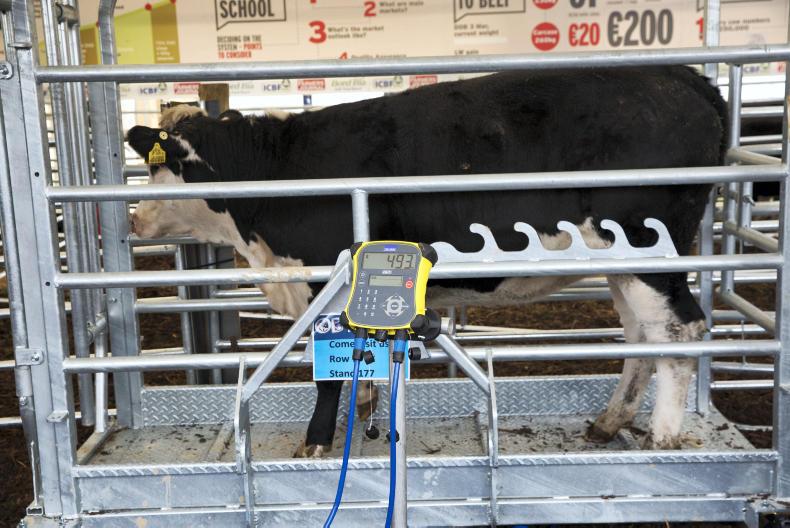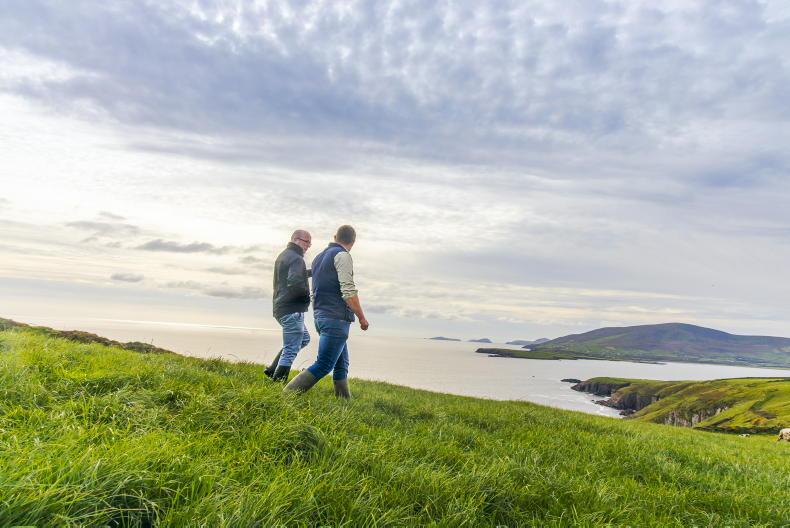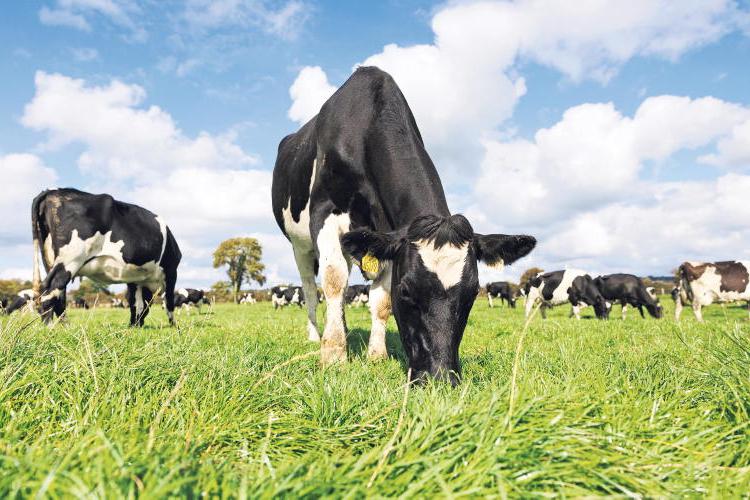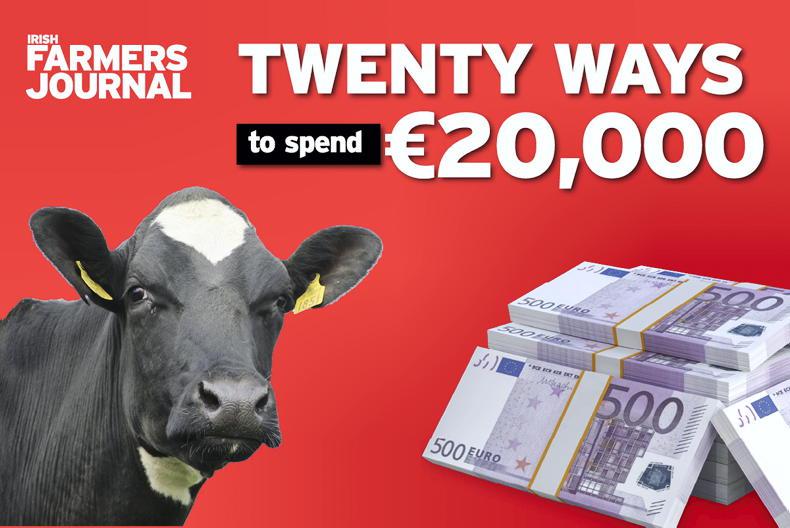How many farmers are currently calving their beef heifers at two years old?
Currently, just 22% of beef animals calve at two years old. The average age a heifer in Ireland calves at for the first time is 32 months.
Why are more farmers not calving heifers at two years old? Is it genetics? Is it management?
It seems to be choice on a lot of farms. The genetics could be an issue on some farms that have gone down the terminal route, but it has been demonstrated on many farms up and down the country that it can be done. Management is key and it’s very important to have heifers the correct weight at breeding and also to look after first-calved heifers to ensure they return to cycling and go back in calf.
What does it mean to the bottom line to calve at two years old?
On a 40ha farm with 53 suckler cows, calving at two years old instead of three years old gains €83/cow, so just over €4,000 could be gained from making this simple management change.
What is the maximum calving difficulty you would use on a maiden heifer?
Farmers need to be very careful picking bulls for heifers. Aim for a maximum of 5% difficulty and more importantly aim for as high reliability as possible. This is hard when using young stock bulls but, when using AI, aim for over 70% reliability on heifers. This should ensure little movement in the figure.
Dairy calf to beef systems
What are Irish Farmers Journal Tullamore Farm manager Ger O’Dwyer’s top calf-rearing tips?
It's important to keep things simple.
Try to buy as many of your calves as you can over the shortest time possible from as few farms as you can. This will ensure ease of management once dairy calves are on farm and should also reduce the chances of disease outbreaks.
Older calves mixing with younger calves can cause serious calf health problems and should be avoided.

Cleanliness and hygiene are extremely important when rearing calves. Sheds need to be disinfected prior to calves coming on to the farm. Lime can be used to aid this process. Make sure calves have a clean dry bed and that the shed has good overhead ventilation, with plenty of inlet and outlet space. Try to eliminate any low-level draughts as this can reduce the calf’s critical temperature and lead to pneumonia issues. Try to feed at the same time each day and walk through the calves regularly to make sure all calves are eating and drinking as normal.
What are the desired specifications for dairy calf to beef systems?
It’s important that calves hit target weight gains. Animals need to be slaughtered under 30 months old to avail of maximum bonuses and QA payments. They need to grade O= or better and a slaughter with a fat score of 3 to 4= and a minimum carcase weight of 230kg. These breed bonuses can be up to 40c/kg at certain times of the year and could add up to €120 on a 260kg carcase.
What do farmers need to be aware of with dairy calf to beef systems?
It is important to remember that there is a limit on the weight these animals can get to when compared with continental suckler-bred animals. These animals will not continue to put on high levels of carcase gain but will deposit fat when they come close to slaughter. It’s important to assess fat cover on a regular basis and avoid animals getting too fat and losing potential breed bonuses.
Is there a risk that with extra Angus and Hereford calves coming on stream, breed bonuses will become a thing of the past?
Joe Burke of Bord Bia said the market was quite favourable at the moment for this type of beef and that promotional work and brand building by the processors and supermarket multiples has meant the market is strong and doesn’t seem to be showing any signs of waning in light of increased supplies.
Read more
Cattle conversations at the Ploughing: the need for feed
How many farmers are currently calving their beef heifers at two years old?
Currently, just 22% of beef animals calve at two years old. The average age a heifer in Ireland calves at for the first time is 32 months.
Why are more farmers not calving heifers at two years old? Is it genetics? Is it management?
It seems to be choice on a lot of farms. The genetics could be an issue on some farms that have gone down the terminal route, but it has been demonstrated on many farms up and down the country that it can be done. Management is key and it’s very important to have heifers the correct weight at breeding and also to look after first-calved heifers to ensure they return to cycling and go back in calf.
What does it mean to the bottom line to calve at two years old?
On a 40ha farm with 53 suckler cows, calving at two years old instead of three years old gains €83/cow, so just over €4,000 could be gained from making this simple management change.
What is the maximum calving difficulty you would use on a maiden heifer?
Farmers need to be very careful picking bulls for heifers. Aim for a maximum of 5% difficulty and more importantly aim for as high reliability as possible. This is hard when using young stock bulls but, when using AI, aim for over 70% reliability on heifers. This should ensure little movement in the figure.
Dairy calf to beef systems
What are Irish Farmers Journal Tullamore Farm manager Ger O’Dwyer’s top calf-rearing tips?
It's important to keep things simple.
Try to buy as many of your calves as you can over the shortest time possible from as few farms as you can. This will ensure ease of management once dairy calves are on farm and should also reduce the chances of disease outbreaks.
Older calves mixing with younger calves can cause serious calf health problems and should be avoided.

Cleanliness and hygiene are extremely important when rearing calves. Sheds need to be disinfected prior to calves coming on to the farm. Lime can be used to aid this process. Make sure calves have a clean dry bed and that the shed has good overhead ventilation, with plenty of inlet and outlet space. Try to eliminate any low-level draughts as this can reduce the calf’s critical temperature and lead to pneumonia issues. Try to feed at the same time each day and walk through the calves regularly to make sure all calves are eating and drinking as normal.
What are the desired specifications for dairy calf to beef systems?
It’s important that calves hit target weight gains. Animals need to be slaughtered under 30 months old to avail of maximum bonuses and QA payments. They need to grade O= or better and a slaughter with a fat score of 3 to 4= and a minimum carcase weight of 230kg. These breed bonuses can be up to 40c/kg at certain times of the year and could add up to €120 on a 260kg carcase.
What do farmers need to be aware of with dairy calf to beef systems?
It is important to remember that there is a limit on the weight these animals can get to when compared with continental suckler-bred animals. These animals will not continue to put on high levels of carcase gain but will deposit fat when they come close to slaughter. It’s important to assess fat cover on a regular basis and avoid animals getting too fat and losing potential breed bonuses.
Is there a risk that with extra Angus and Hereford calves coming on stream, breed bonuses will become a thing of the past?
Joe Burke of Bord Bia said the market was quite favourable at the moment for this type of beef and that promotional work and brand building by the processors and supermarket multiples has meant the market is strong and doesn’t seem to be showing any signs of waning in light of increased supplies.
Read more
Cattle conversations at the Ploughing: the need for feed











SHARING OPTIONS